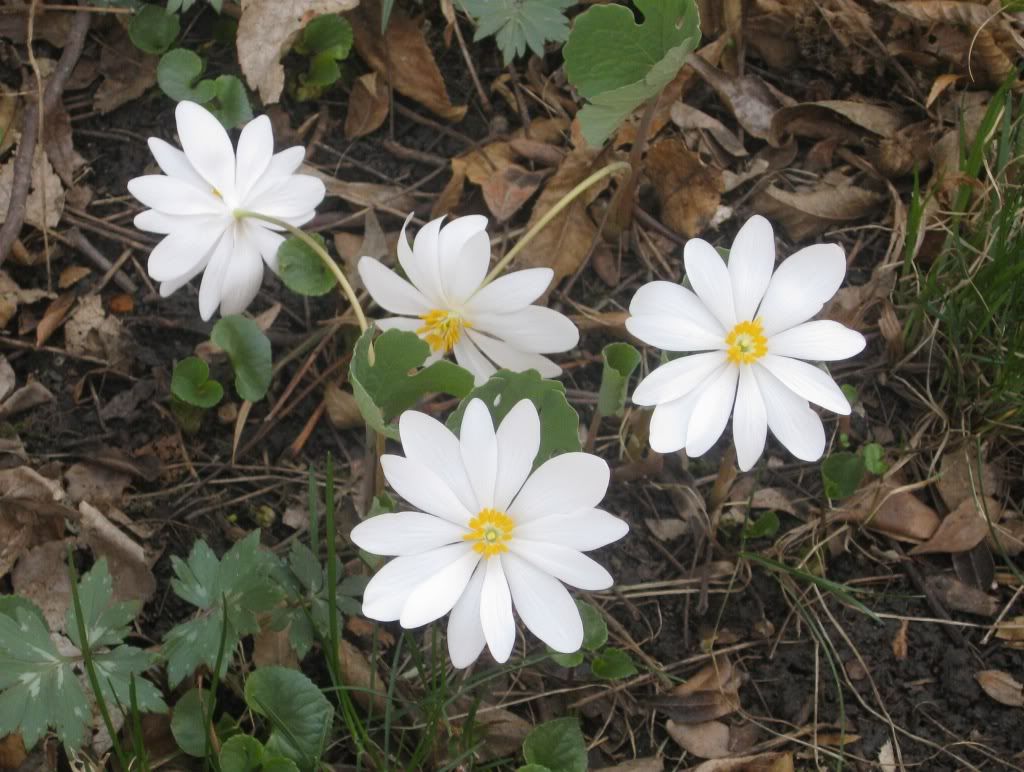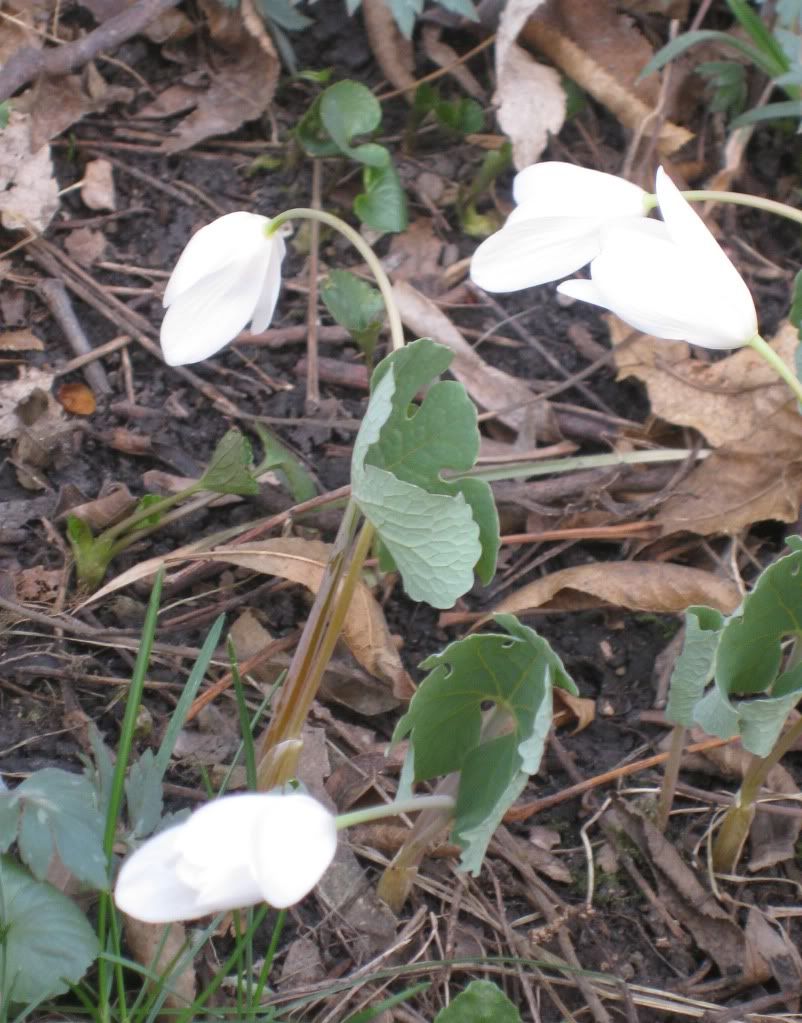The warm March weather has brought out many plants earlier than usual this year, which inspired me to launch a new series at Bleeding Heartland. Every Wednesday I will post at least one photo of a native wildflower blooming somewhere in central Iowa.
Today’s installment: bloodroot, which you can find in some wooded areas in March or April.
Consider this an open thread; all topics welcome.
Bloodroot gets its name from the red dye that can be extracted from the root. You’d never guess from looking at the flower:
In the evening, bloodroot flowers close up and look like this:
This post gives tips on how to grow bloodroot. I didn’t realize the root extract has so many medicinal uses:
The rootstock is thick, round and fleshy, slightly curved at ends, contains an orange-red juice, and is about 1 to 4 inches long, with orange-red rootlets. The root (or juice) of bloodroot is considered toxic, and contains several alkaloids, red resin and an abundance of starch.
The most notable alkaloid is sanguinarine, which has shown antiseptic, anesthetic and anticancer activity. American Indians used the root for rhuematism, asthma, bronchitis, lung ailments, laryngyitis, fevers and was also applied to warts. It is used commercially as a plaque-inhibiting agent in toothpaste, mouthwashes and rinses.
The root is collected in the autumn, after leaves die down; it must be stored in a dry place or it quickly deteriorates. When dried, they break with a short sharp fracture with very little smell, and a bitter taste. Powdered root causes sneezing and irritation of the nose.


